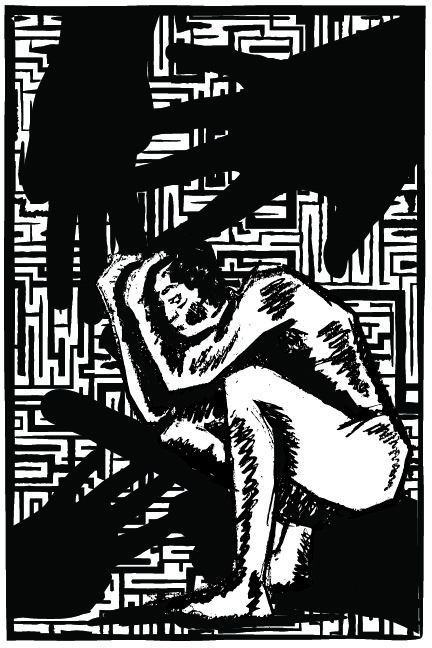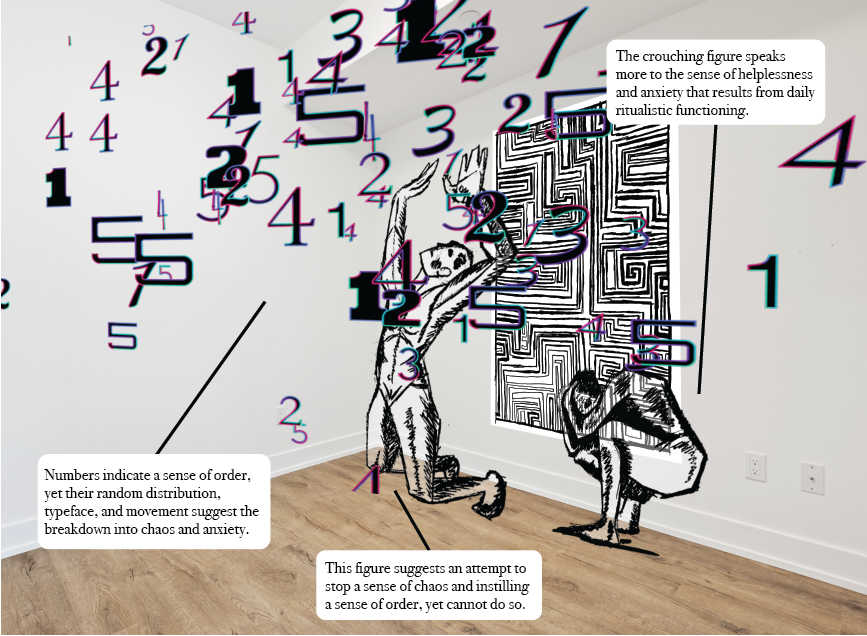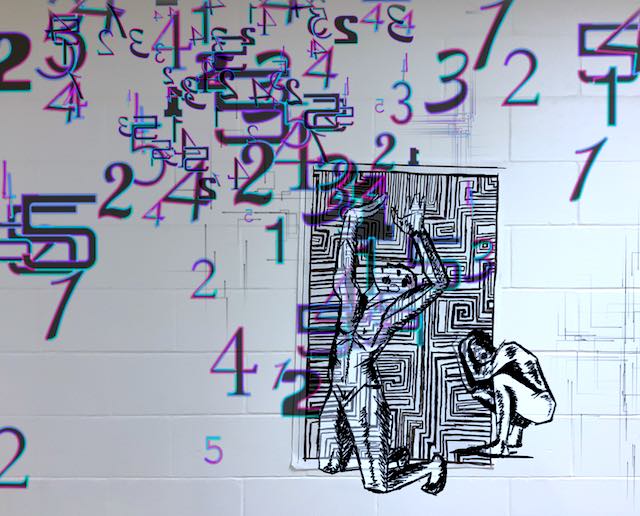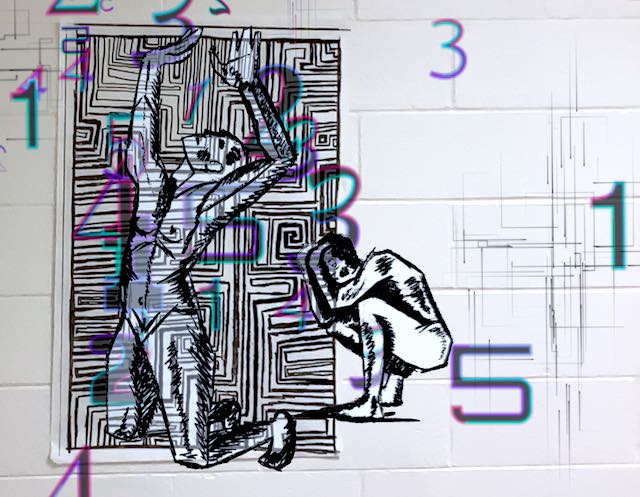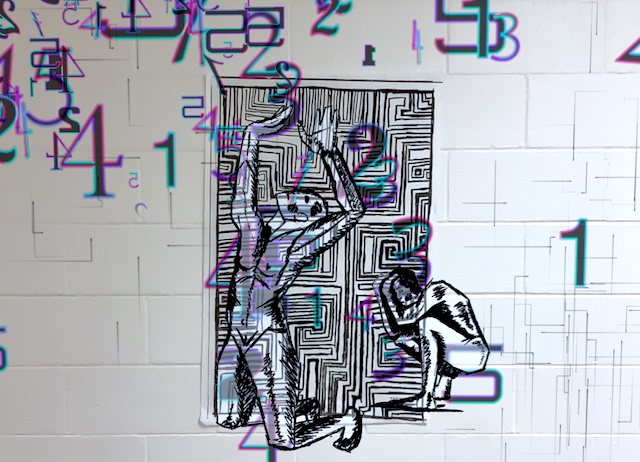


The Prompt
The combination of art and technology lends itself to creating a more immersive, thought-provoking experience.
Artwork has the ability to extend beyond the traditional frame, engaging more viewers in unexpected ways.
Art can now move in front of us, interact with us, and react to us. This becomes a unique opportunity to draw attention to different ideas and concerns.


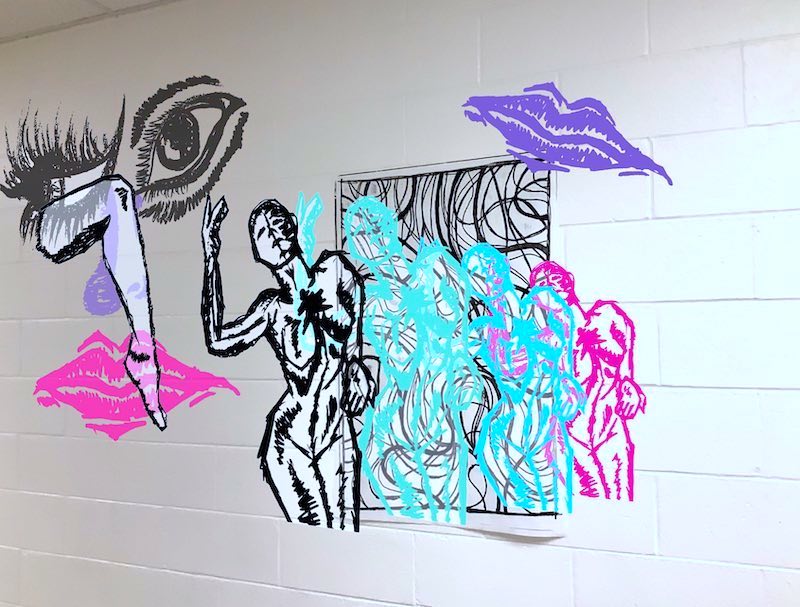
The Problem
Mental illness is a complex and multifacted issue faced by millions. It reaches across a person's entire existence.
While a diagnosis, list of symptoms, and technical terminology can typically be understood, it becomes far more difficult to explain the abstract emotional and spiritual effects a person may experience.
This lack of understanding can lead to a lack of support, impeding the healing or therapeutic process.

The Solution
Through combining the art of printmaking with augmented reality, viewers will have the opportunity to experience mental illness deconstructed.
Disjointing images from their original form into multimedia layers communicates the idea of complexity and interconnection.
In addition, by making some layers only visible through augmented reality, it further drives the concept of the intangibility of mental illness.


The Images
Each piece is representative of a different mental illness or psychological phenomenon. Human anatomy, line quality, and symbolism are key elements linking them together.


Social Anxiety Disorder
Those suffering with social anxiety may find it difficult to navigate social settings. It can drastically affect a person's behavior, leading to loneliness and isolation.
A twisted, winding path overlaying a background of tight lines represents this psychological balancing act.
Abstracted eyes convey a sense of uneasiness and judgement from onlookers. Some look out at the viewer, while others look away, suggesting irrationality.
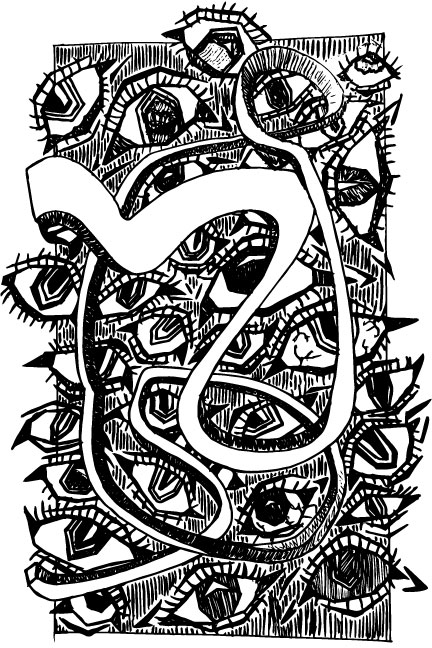
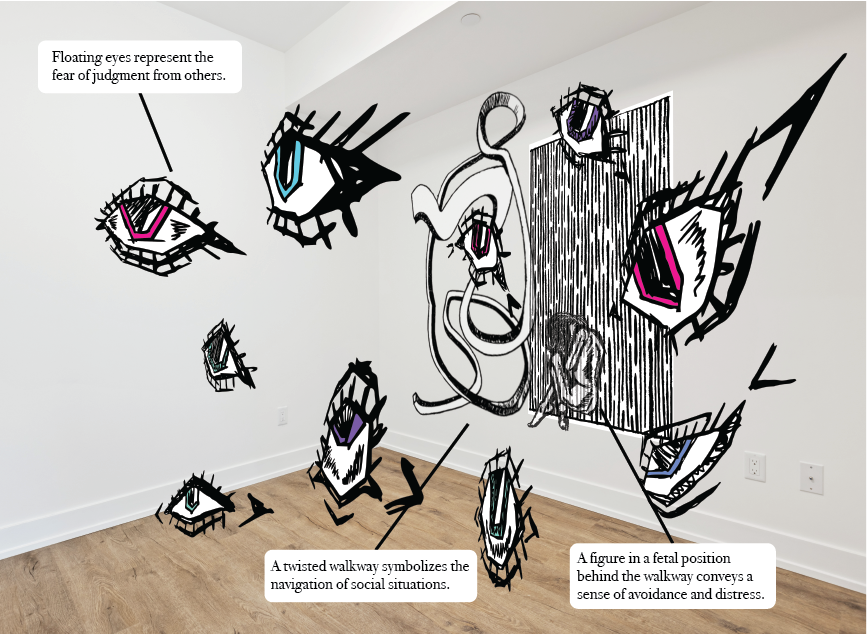
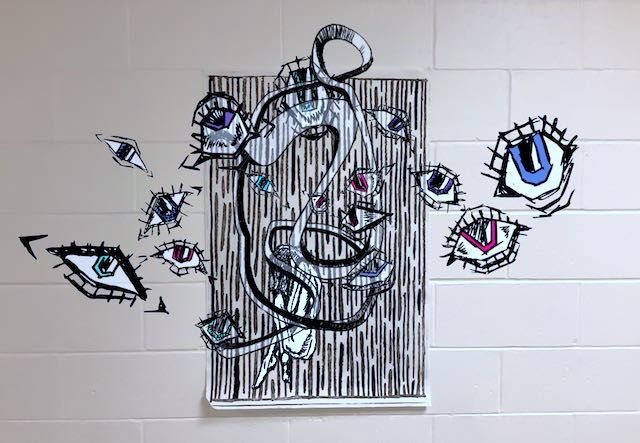
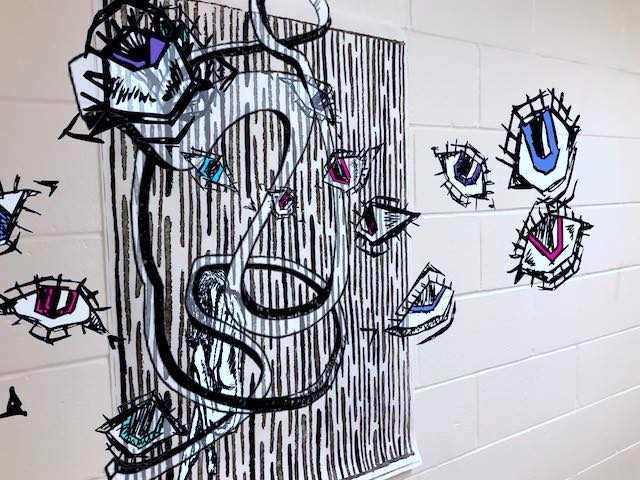

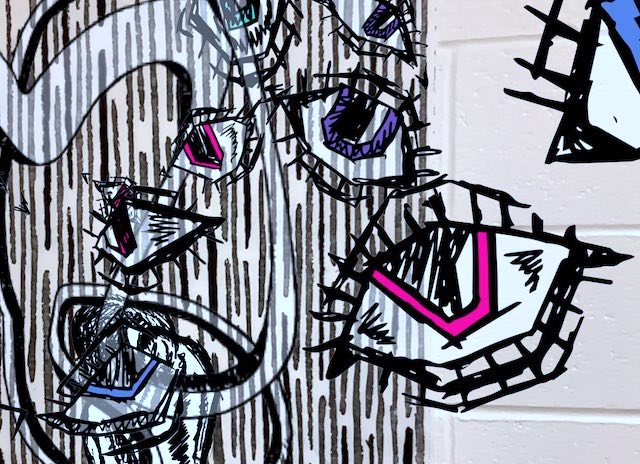

Panic Disorder
This image portrays an individual in distress, portraying the symptoms of a panic attack. This often includes hyperventilation, excessive sweating, and an overall sense of dread.
Neurons allow us to function, yet can also render us incapacitated by overreacting to certain stimuli, which can trigger a panic attack.
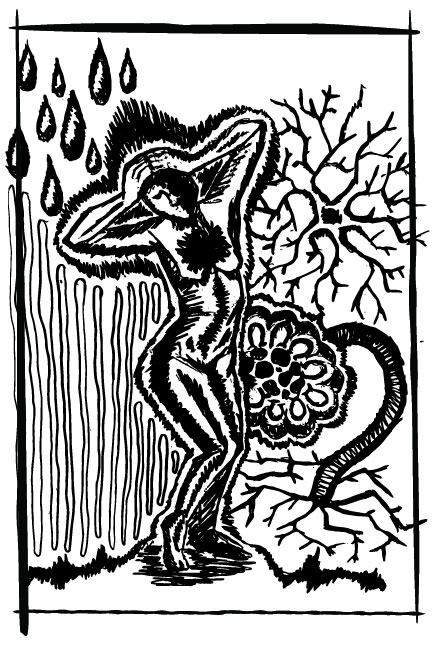
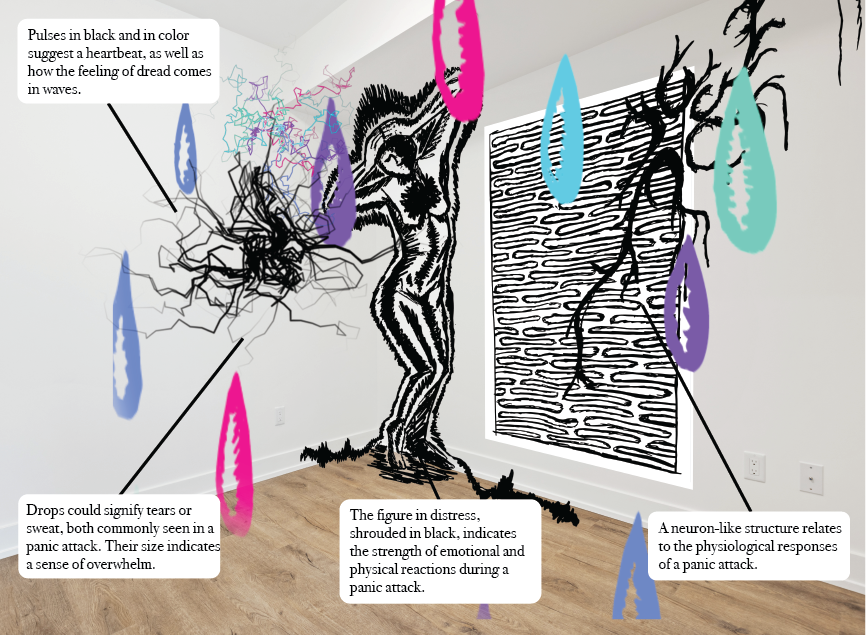

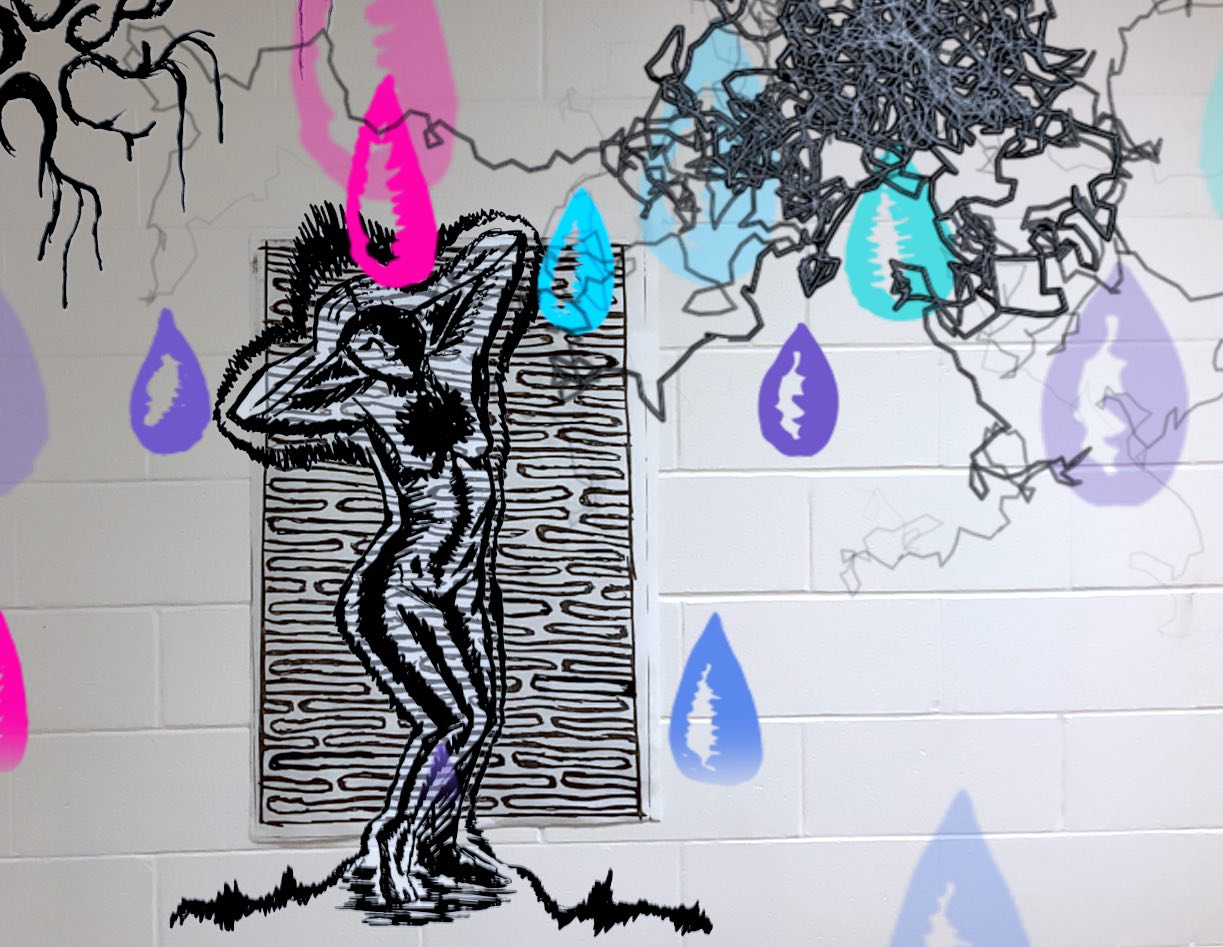

Body Dysmorphic Disorder
Comparing one's appearance to another is common. However, it becomes even more destructive when it becomes an obsession.
Body Dysmorphic Disorder is often seen as a preoccupation with an imagined or slight physical defect, causing anxiety.
Disembodied features and body parts represent the obsession with particular flaws. The figure's aloof pose alludes to a model's appearance, the manufactured standard of beauty.

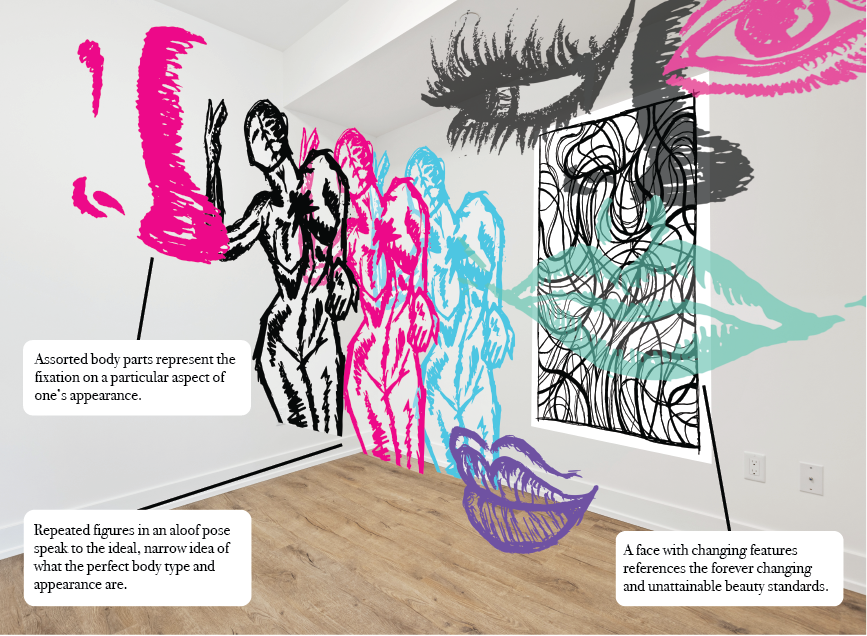
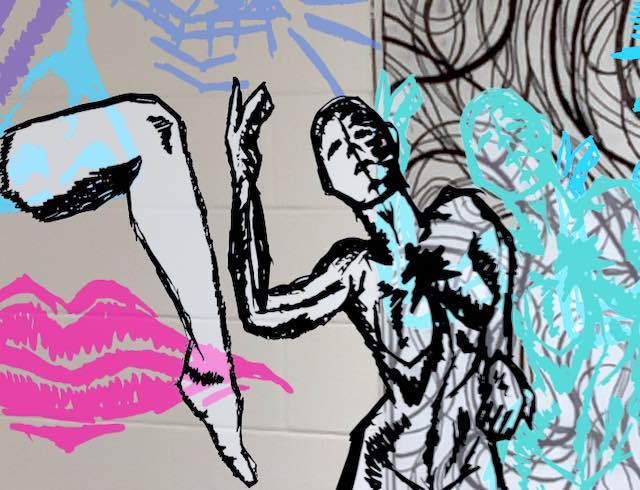
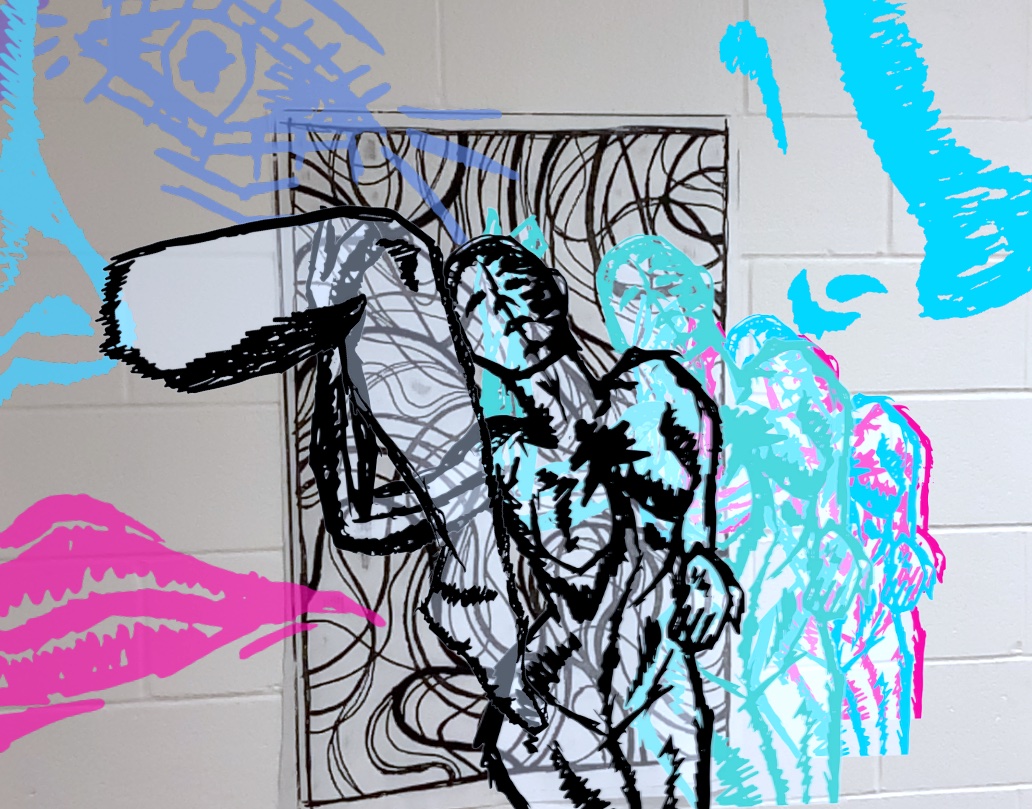
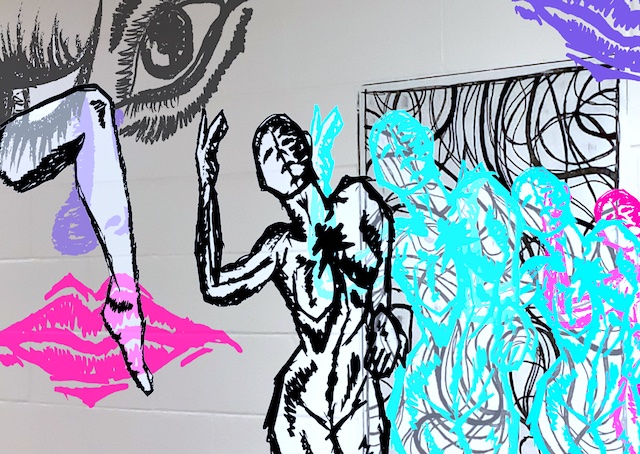

Dissociation
Separating oneself from reality is not always a symptom of mental illness. This piece demonstrates the balance between these negative and positive attributes. Feeling uplifted by escapism, versus losing touch with reality.
Expressive, organic line combined with butterflies and roses convey a sense of fantasy and lightness. However, the covered eyes and submissive pose indicate detachment and loss of control.
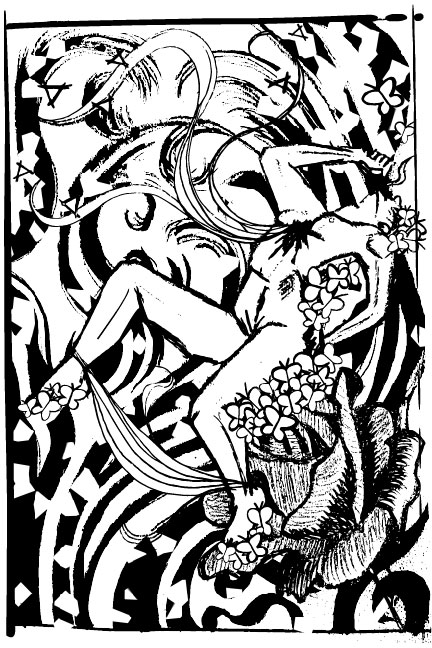
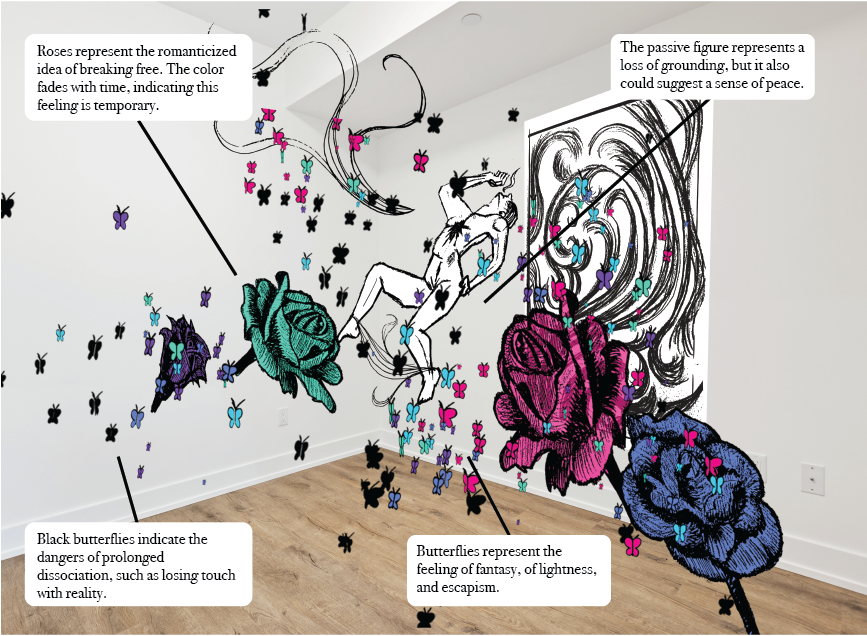
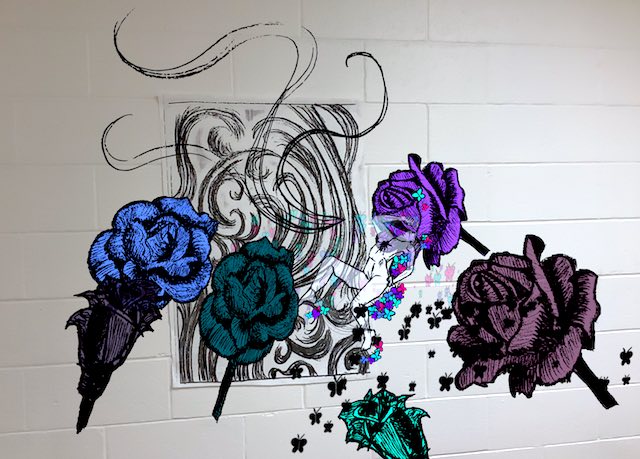
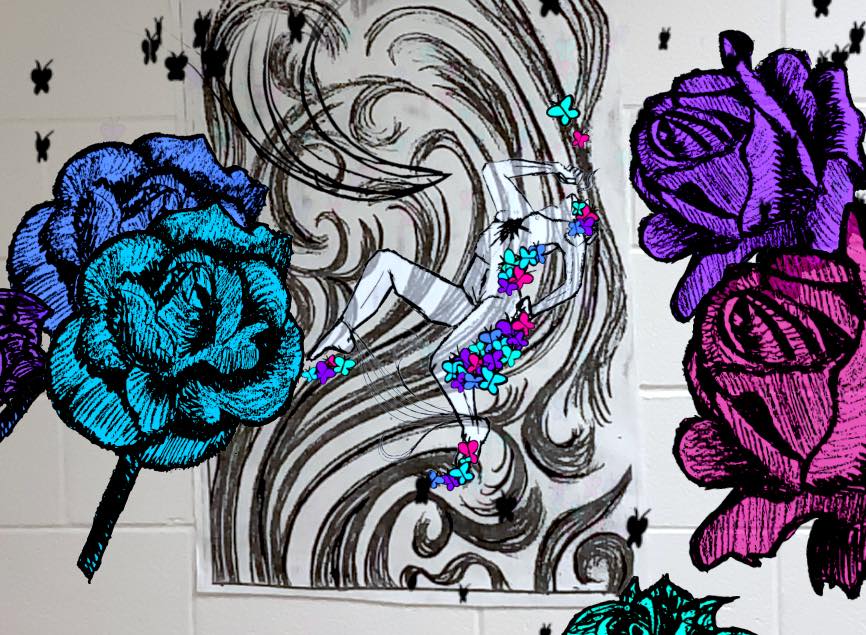

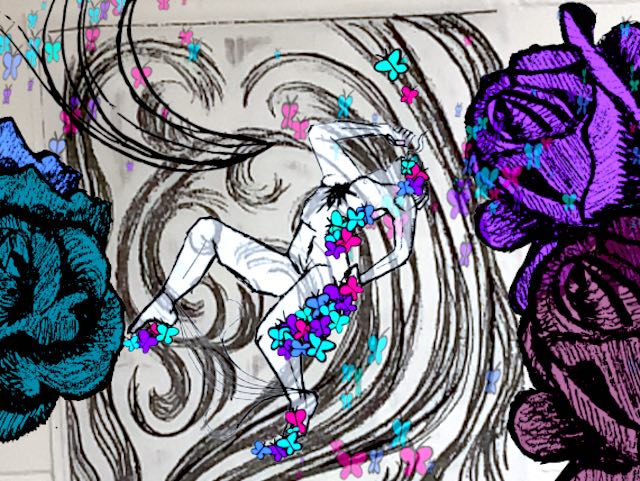

Obsessive Compulsive Disorder
This piece focuses on the concept of the obsession. Structure, indicated by the maze of straight line work and counting fingers, is typically a major fixation.
The overbearingness of the disorder is indicatd by scale and dominance of solid color. The figure suggests a feeling of passivity and distress.
The person typically will acknowledge that these thoughts are irrational, yet continue to act on their obsessions and perform compulsive behaviors as a result.
